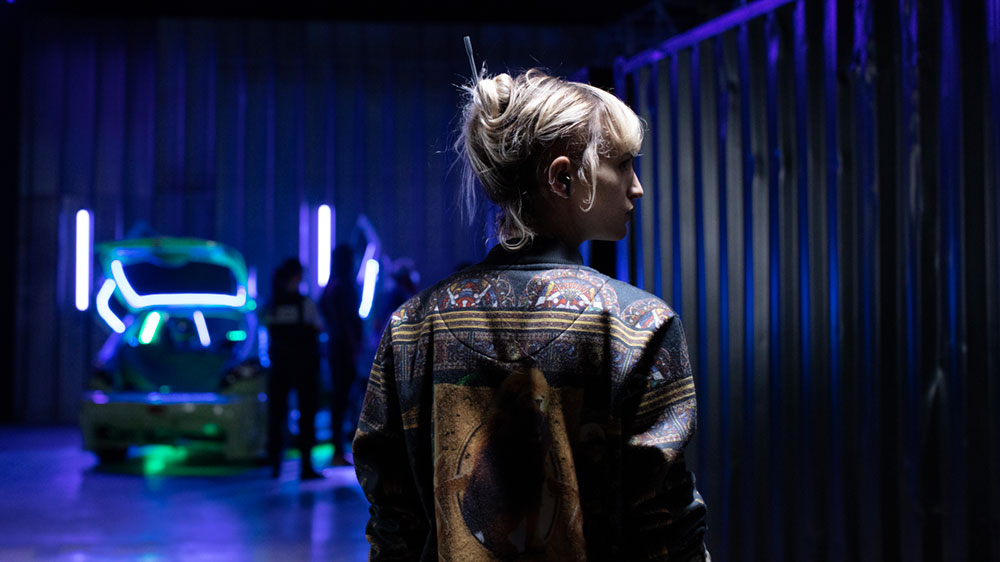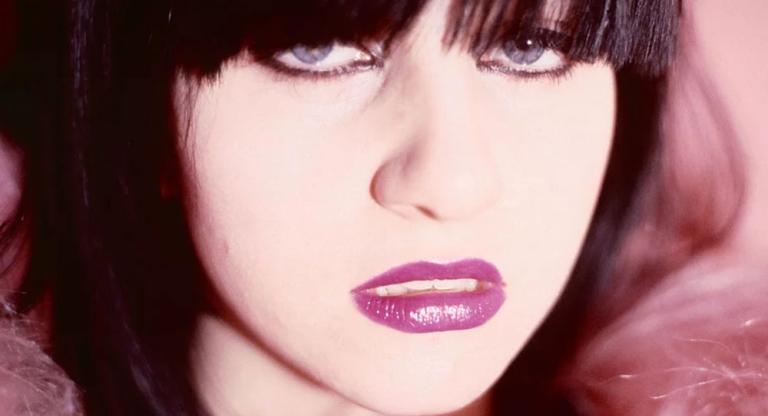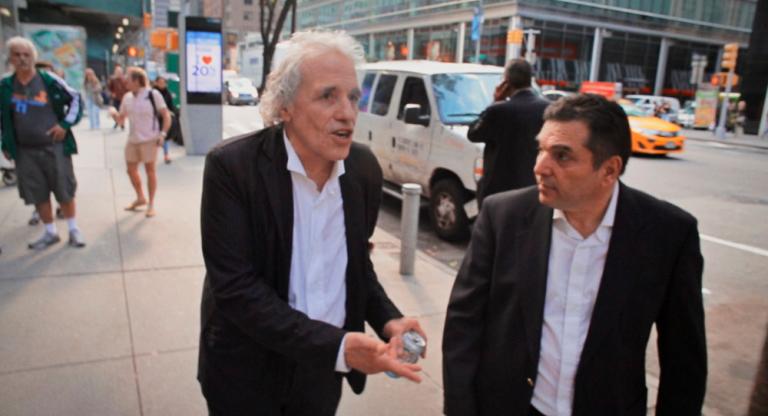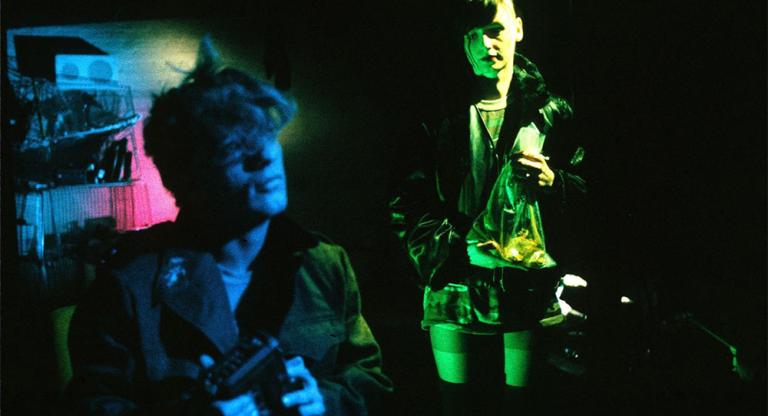Julia Ducournau’s first feature Raw (2016) told the story of a young woman named Justine studying to be a veterinarian, faced with her own taste for flesh. It’s a little too easy to add this and the French director/screenwriter’s latest Titane to the long list of movies known as both cinema du corps or New French Extremity (the term coined by Artforum critic James Quandt nearly two decades ago). Films about connection, the repulsion—body horror—is only what fixes you to the screen. Unnervingly affective, both of Ducournau’s films present a radical tenderness. This is the new-new, in theaters a few seats away from the bodies of others.
Titane, the story of a sociopathic woman who has a titanium plate put into her head after a childhood accident, premiered at the Cannes Film Festival this telltale summer. Ducournau became the second female director after Jane Campion to win the Palme d’Or.
Ducournau spoke to me over Zoom earlier this week from Los Angeles while I was in her native Paris. We talked about choreography, the inescapable sway of Virginie Despentes and Claire Denis, and Simone de Beauvoir.
This conversation has been edited for length and clarity.
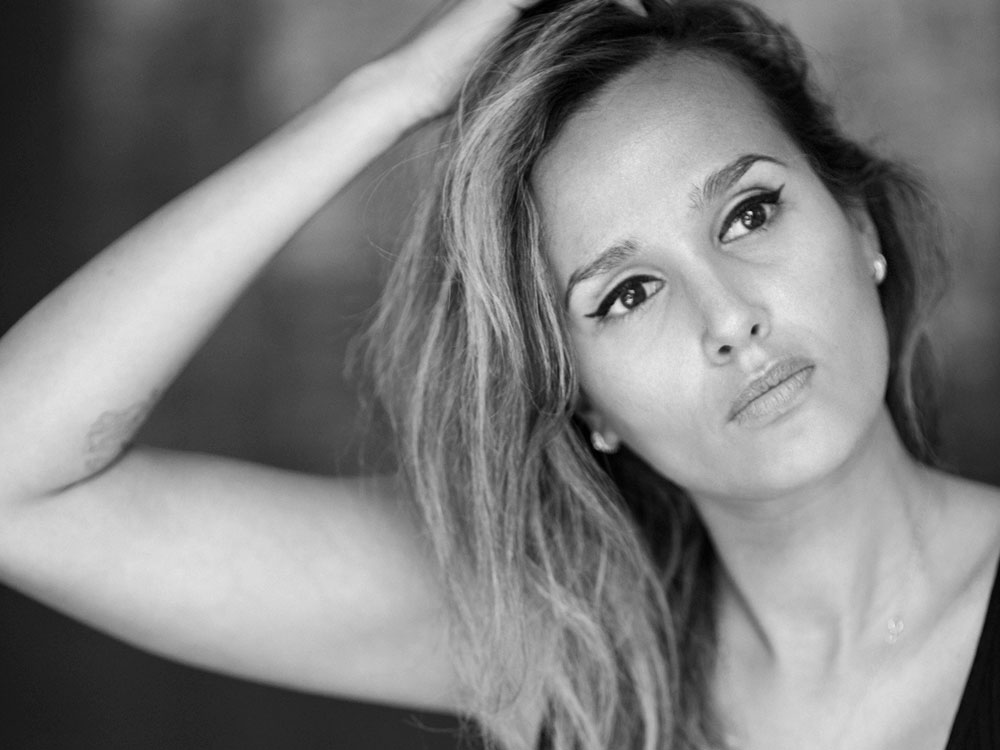
Stephanie LaCava: I'd like to talk a little bit about the exotic dancing portrayed on the cars in the beginning. The first killing of the man who follows Alexia from work made me think of Virginie Despentes and their reclaiming of the narrative, you know Baise-moi and all of these kinds of movies. Was that on your mind at all?
Julia Ducournau: No, although I really love Virginie Despentes as a writer. This was not at all something that I thought about when I did this scene. I think reclaiming the narrative and taking over the male gaze is something that a lot of women artists are interested in right now. And in the case of Virginie Despentes for a very long time.
What made you decide to start the story with the two women, Alexia and Justine, dancing at the car show?
Somehow the fact that I try to somehow mimic the male gaze at the start. Obviously it means that the gaze sexualizes the dancers. And I think that when we get to Alexia, she actually reclaims the power of the gaze, by looking through the lens and looking directly at you, so that you're not looking at her, she's looking at you. She also does this through her choreography, which is incredible in its ownership of the car and of all the representations that are linked to cars in general.
This leads me to the choreography of the film. I mean, that was a huge part of the film. The car show, the firemen. Tell me more about that. Did you have a choreographer on set?
We had a choreographer for [Agathe Rousselle’s dance] on the car. We worked with a pole dancer that is super famous in Europe called Doris Arnold, who did an amazing job. I really enjoyed working with her cause I was dancing as well in rehearsals. I loved it!
I love that.
It was really cool. She choreographed that and also the dance on the truck at the end. It made sense because both of these dances kind of echo each other with the character evolution that we've seen in between, and how the first choreography is actually transcended by the one on the truck at the end.
At the end you have the same, let's say, form of dance, the same form of choreography, but it's such a moment where the character is actually fully complete and completely transcends the gender that she's been put into at any part of the film. So she's both a masculine and feminine or none of it at all, and just being her own creature. So it made sense for me to hire the same person to choreograph these two very resonant scenes.
Dancing obviously is incredibly important in that film because, for one, we don't have much dialogue in the film. So it's a very nice way to instigate dialogues between my characters without having to put words on them and also to create an immediacy with the audience. Because when you watch someone dance, somehow you feel this kind of immediate body empathy, where your body also wants to move a little bit.
It's not like I planned to do a dance film about dance—it was just for the characters. If you're thinking about Vincent and Alexia and Adrien, they can't talk together. She [Alexia] doesn't speak, which drives [Vincent] insane, but he's not going to monologue like continuously to her, which would be annoying for everyone. So at one point the only way to pull Adrien to him and to try to get a reaction is through dancing and incidentally through fighting as well..
My favorite scene is the scene when he dances with her in there, in the room and you really feel them at once come-
Yeah! Me too, I love that scene. Because again, you don't need words here. The thing that is important is that for the first time when they start dancing and smiling and looking at each other, they do that beyond representation, beyond the lies that they tell each other and the smiles; the eyes and just the fact that they're dancing feel incredibly true. You feel like you're hitting a truth of the character here in the relationship that is beyond Adrien, that is beyond the fantasy that is beyond the lights. And I think you can't express this with words as well as you can with this dancing.
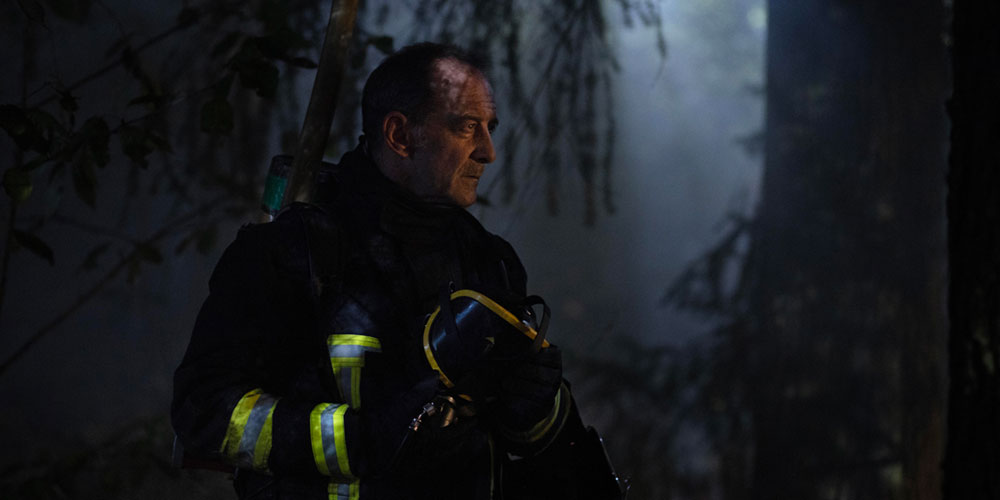
Beautiful. It was wonderful. When I saw the movie, I thought a lot of Claire Denis.
You mean just because we're French? [laughs]
[Laughs] For me it's the cinéma du corps, and the Beau Travail. like the dance with the pompiers. And the fire scene reminded me of Trouble Every Day.
Claire Denis is someone that is almost unavoidable in France anyway, she's a huge filmmaker. Her influence on my generation has been incredibly prominent. So for me it is not a direct reference for my film. It's obvious that the way she portrayed corporeality and the way she manages to create character psyche without words. Trouble Every Day has very little dialogue. It's obvious that the woman has created a language that somehow infuses throughout my generation.
Is there any literary tradition of this that you're interested in or that parallels with things you've read?
Yeah, I think there are many things. I read a lot of philosophy because I did my, how would you say, the studies I did after graduating high school, and philosophy had a large part in it. I very often say that movies and the way I see the world is very existentialist, obviously Sartre, Beauvoir. I always say in interviews, “I did not invent anything. This comes from Beauvoir's The Second Sex.”
For example, the fact that the structure of my film is not in three acts. That is all about shedding skin in order to get to a form of essence of the characters and of the film. I always illustrate it by saying, you have to be many to be one. And again, I have not invented that concept. This is purely existentialist, but it's really something I do believe in life, that I do believe for my characters, and I do believe for myself. So I see everything like a form of metamorphosis, constant metamorphosis of various skins that somehow, no matter where it's going, it's not even important. The important fact that is that it happens and this is how you get to grow up. Also, I refer myself a lot to Levi-Strauss' work.
Again, talking about the take we have in our modern, Western societies on what it is to be human or not to be human. This is always something that is very interesting to go through in order to constantly question your own humanity, your own identity and the way that you exist in the world nowadays and how you can broaden the spectrum. It is also something that I try to do, to portray a humanity that has a broader spectrum than we thought. To kind of blur the lines of gender, go beyond the gender, even seeing it as irrelevant to define an individual or even the interactions of an individual that are incredibly limited by this social construct.
